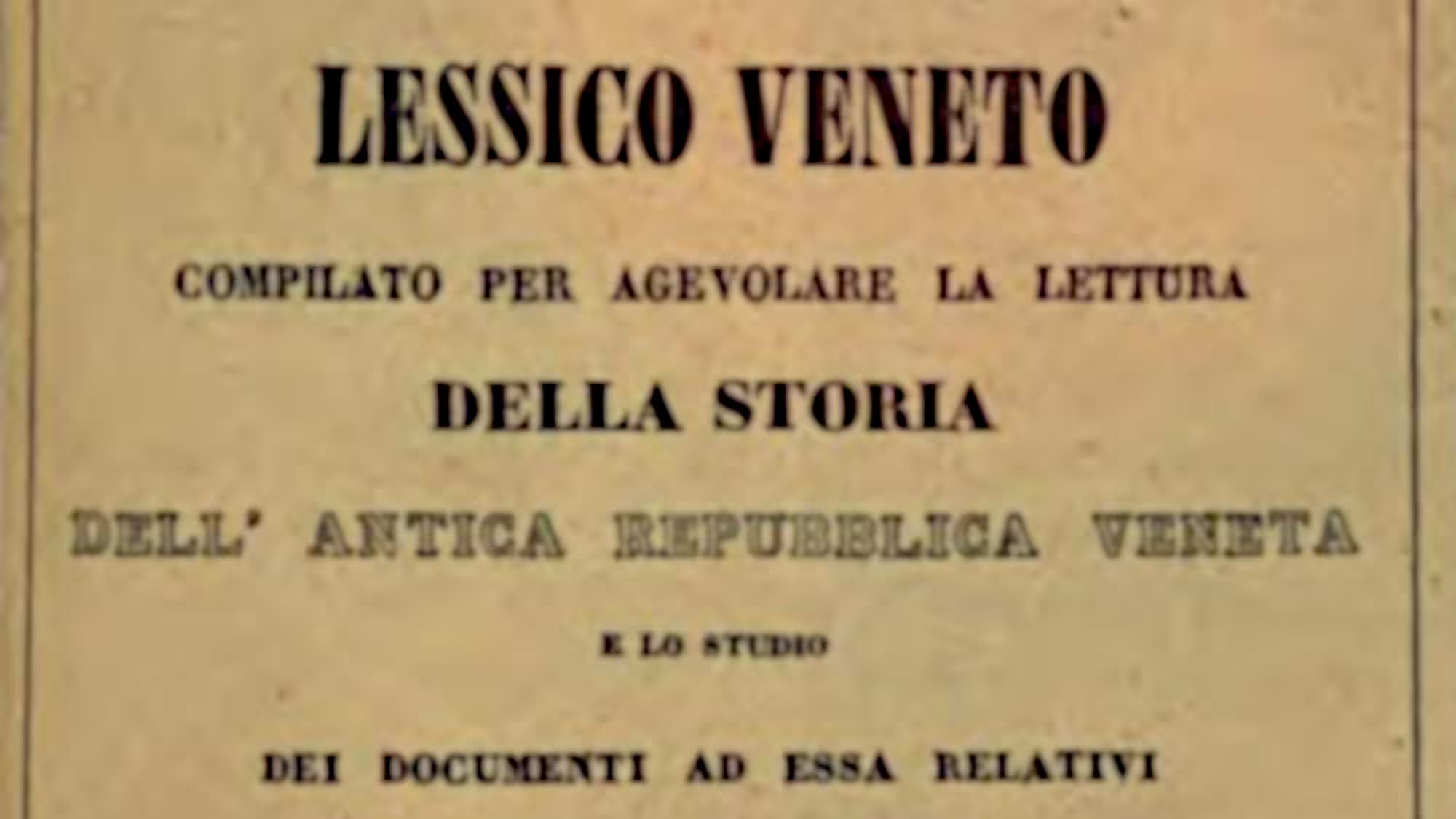Maggior Consiglio
The Lessico Veneto (Venetian Vocabulary) by Fabio Mutinelli was published in 1851. It is an invaluable tool for anybody who reads texts from the time of the Republic of Venice.
Fabio Mutinelli (1797-1876) was director of the I. R. Archivio Generale di Venezia (1847-1861), and a prolific writer on the history of Venice.
MAGGIOR CONSIGLIO. The Republic of Venice, which with the first institution of the Tribunes, then of the Doge and his Councillors, already tended towards aristocracy, could not rightly become aristocratic until, having stripped the Doges of an overly extensive, indeed abusive, authority, in the year 1172, a distinct body of optimates was formed, which was called the Greater Council. This was therefore the true sovereign and the true master of the republic, on whom all the magistrates depended, and in which, due to the reform proposed in September 1297 by Doge Pietro Gradenigo, only patricians born from legitimate marriages and noble parents were admitted, so that through this reform, which the Venetians used to call the Locking of the Maggior Consiglio, the aristocratic system was fully perfected in the republic. The Doge, with his Minor Council, had the presidency of the Maggior Consiglio, and proposed the election of many magistrates: anyone who had not reached the age of twenty-five could not be admitted to the Maggior Consiglio, or who had not been repaired by the barbarela of this defect.1 (V. Barbarela).
Translator’s notes
- Each year on the day of St Barbara the Doge extracted by change the names of thirty patricians, aged between twenty and twenty-four, who would enter the Maggior Consiglio even though under twenty-five years of age. The origin of this tradition is not clear. See also the entry Barbarela. ↩︎
Original Italian text
MAGGIOR CONSIGLIO. La repubblica di Venezia, la quale colla prima instituzione dei Tribuni, poi del doge e dei suoi Consiglieri, tendeva già all’aristocrazia, non ha potuto giustamente divenire aristocratica se non quando, spogliati i dogi di una troppo estesa, anzi abusiva, autorità, si passò, nell’anno 1172, alla formazione di un distinto corpo di ottimati, cui diedesi il nome di Maggior Consiglio. Fu questo pertanto il vero sovrano, e il vero padrone della repubblica, dal quale tutti i magistrati dipendevano, ed in cui, per la riforma proposta nel settembre 1297 dal doge Pietro Gradenigo, non furono ammessi che patrizii nati da legittime nozze e da nobili genitori, di guisa che per detta riforma, la quale dai Veneziani usavasi chiamare la serrata del Maggior Consiglio, si andò a perfezionar pienamente nella repubblica l’aristocratico sistema. Il doge, col suo Consiglio minore, avea la presidenza del Maggior Consiglio, e proponeva la elezione di molti magistrati : non potea avere ingresso nel Maggior Consiglio chi non fosse giunto all’età di anni venti cinque, ovvero per la barbarela riparato non avesse a questo difetto. (V. Barbarela).
p. 237
Related articles
- The Consiglio Maggiore
- State institutions of the Republic of Venice
- Barbarela — Lessico Veneto
- Maggior Consiglio — ASV Indice


Leave a Reply